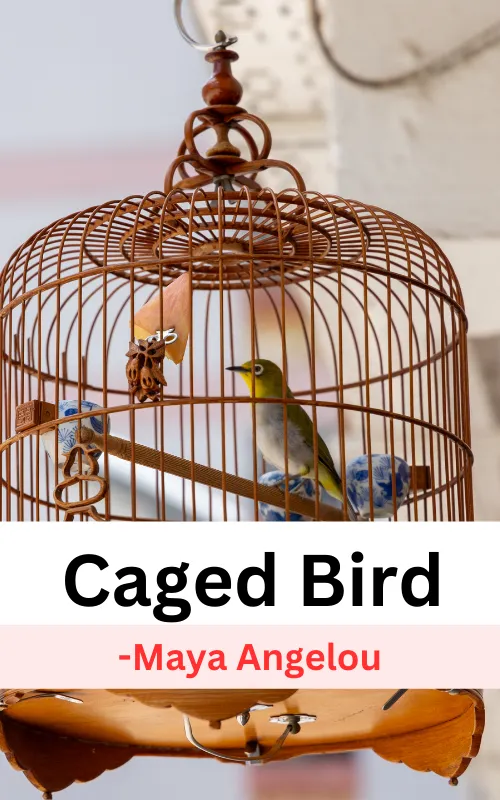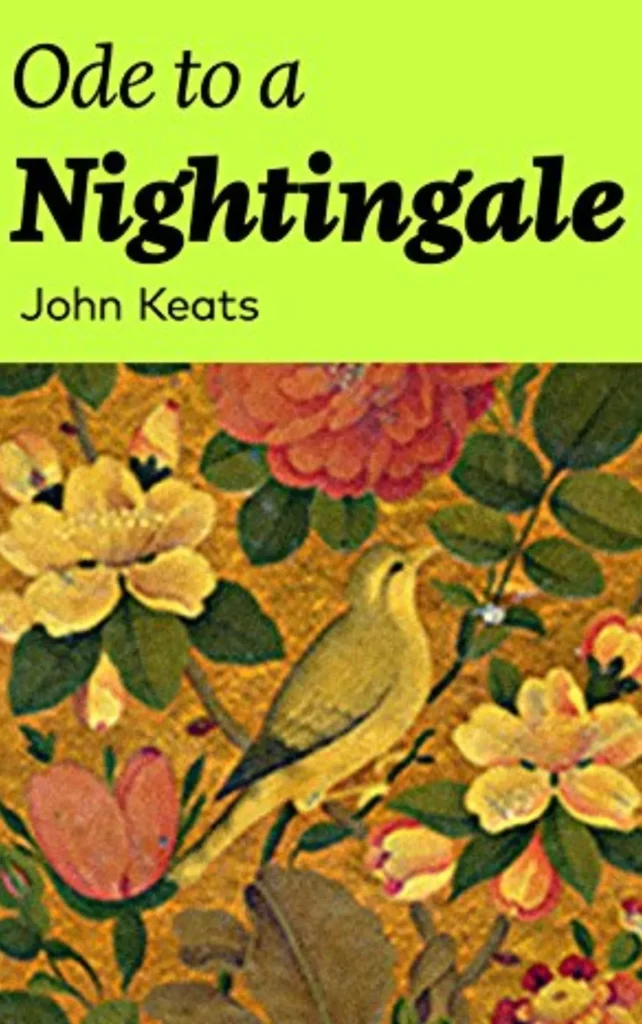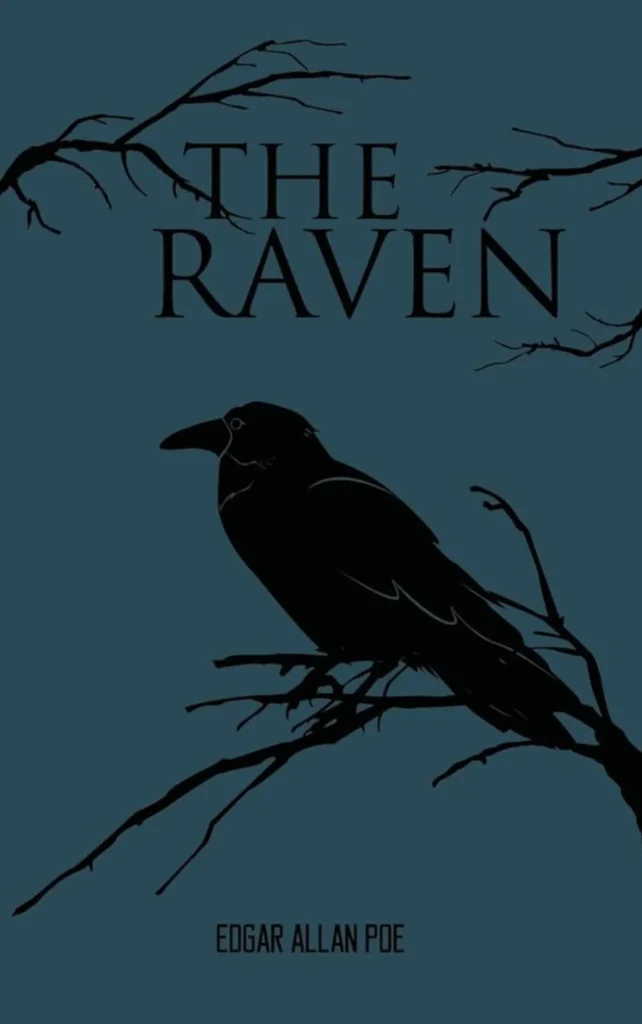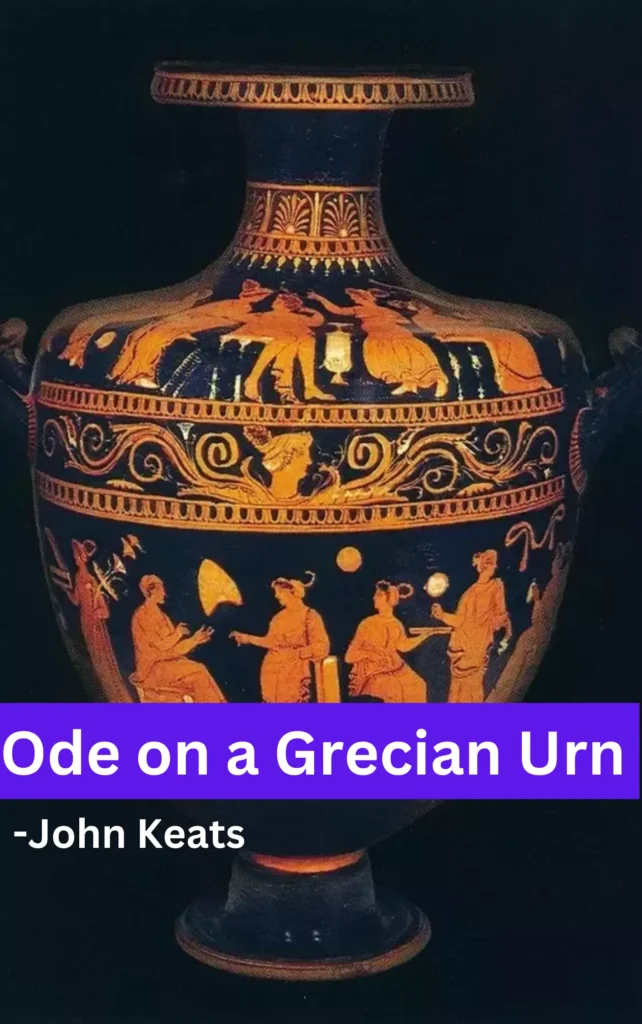About Poem: Caged Bird
| Poem Title | Caged Bird |
| Author | Maya Angelou |
| Publication year | 1983 |
| Genre | Autobiographical, Coming-of-age, Poetry |
| Form | Free verse |
| Theme | Freedom and oppression, racial inequality, self-expression, identity, resilience |
| Language | Simple, direct language with powerful imagery |
| Structure | The poem consists of three stanzas, with varying line lengths, and the use of rhyme and rhythm. |
| Symbols | The two birds represent the oppressed and the oppressor; the caged bird’s song represents hope and resilience. |
| Literary devices | Metaphor, simile, personification, enjambment |
Themes: Caged Bird
The themes of “Caged Bird” by Maya Angelou are:
- Freedom ➤ The desire for freedom and equality.
- Oppression ➤ The experience of being restricted or treated unfairly.
- Identity ➤ Discovering who you are and expressing it.
- Resilience ➤ The ability to endure and overcome challenges.
- Racial Inequality ➤ The unfair treatment of people based on their race.
Caged Bird Poem by Maya Angelou
A free bird leaps
on the back of the wind
and floats downstream
till the current ends
and dips his wing
in the orange sun rays
and dares to claim the sky.
But a bird that stalks
down his narrow cage
can seldom see through
his bars of rage
his wings are clipped and
his feet are tied
so he opens his throat to sing.
The caged bird sings
with a fearful trill
of things unknown
but longed for still
and his tune is heard
on the distant hill
for the caged bird
sings of freedom.
The free bird thinks of another breeze
and the trade winds soft through the sighing trees
and the fat worms waiting on a dawn bright lawn
and he names the sky his own.
But a caged bird stands on the grave of dreams
his shadow shouts on a nightmare scream
his wings are clipped and his feet are tied
so he opens his throat to sing.
The caged bird sings
with a fearful trill
of things unknown
but longed for still
and his tune is heard
on the distant hill
for the caged bird
sings of freedom.
Watch Full Poem Summary on YouTube
Caged Bird Summary & Analysis
Caged Bird by Maya Angelou is a poignant and symbolic poem that tells the story of two birds, one free and one caged, to illustrate the concept of freedom and oppression. The poem is often interpreted as a commentary on the African American experience in the United States.
Stanza 1
In the first stanza, the poet describes the free bird as “leaping on the back of the wind” and “dipping his wing in the orange sun rays.” This imagery paints a vivid picture of a bird soaring through the open sky, enjoying the boundless freedom of the outdoors. In contrast, the caged bird is described as having a “barrier his feet are tied” and “his wings are clipped and his feet are tied.” These lines depict a bird confined within the limitations of a cage, unable to experience the joys of the open world.
Stanza 2
The second stanza further emphasizes the contrast between the two birds. The free bird “dares to claim the sky” and “names the sky his own.” This signifies the freedom to explore and possess the vast expanse of the sky. On the other hand, the caged bird’s song is described as “a fearful trill,” which conveys a sense of fear and restriction. The caged bird’s song is not the joyful, spontaneous melody of the free bird; it is a cry for help.
Stanza 3
In the third stanza, the poet delves into the emotional state of the caged bird. The caged bird’s heart “is sore,” and it longs for freedom. It “stalks down his narrow cage” in a manner that suggests frustration and yearning. The caged bird’s cry for freedom is a “shadow of the things that are” – a stark reminder of the life beyond the cage.
Stanza 4
The fourth stanza draws a powerful comparison between the free bird and the caged bird. The free bird “floats downstream” in the gentle breeze, while the caged bird’s “wings are clipped and his feet are tied” to prevent it from experiencing such liberty. The juxtaposition of these images highlights the stark difference in their experiences.
Stanza 5
The fifth stanza underscores the idea that the caged bird still dreams of freedom. It sings of the “dream that is heard” and the “hope that stands.” This suggests that even in its captivity, the caged bird clings to the hope of one day breaking free.
Stanza 6
In the final stanza, the poet reflects on the contrasting attitudes of the free bird and the caged bird. The free bird “sings of freedom” and “the trade winds soft through the sighing trees.” In contrast, the caged bird’s song is a “prayer that he sends from his heart’s deep core.” This prayer represents the caged bird’s yearning for freedom, a plea to escape the confines of its cage.
FAQs: Caged Bird
What is the poem caged bird about?
Caged Bird is about hope and resilience in the face of oppression.
What is the main message of the caged bird?
The main message of “Caged Bird” is about the desire for freedom and the pain of being confined.
What is the caged bird blinded by?
The caged bird is blinded by the fear and limitations of its cage.
Why does the caged bird open his throat to sing?
The caged bird sings to express its desire for freedom.
What does it mean to be beautiful in caged bird?
Being beautiful means experiencing freedom and not feeling trapped or confined like the caged bird.
Why did the caged bird feel betrayed?
The caged bird felt betrayed because it couldn’t enjoy freedom like the free bird.
What is the irony in the caged bird poem?
The irony in the poem is that the caged bird sings of freedom while it’s trapped.
What does the free bird symbolize in Caged Bird?
The free bird symbolizes freedom and an unrestricted life.
What does the term fat worms signify?
The term “fat worms” in the poem signifies the abundant, carefree life of the free bird in contrast to the confined and limited existence of the caged bird.
What is meant by the orange sun rays?
In the poem, “orange sun rays” describe the bright, warm light from the sun at sunrise or sunset.











